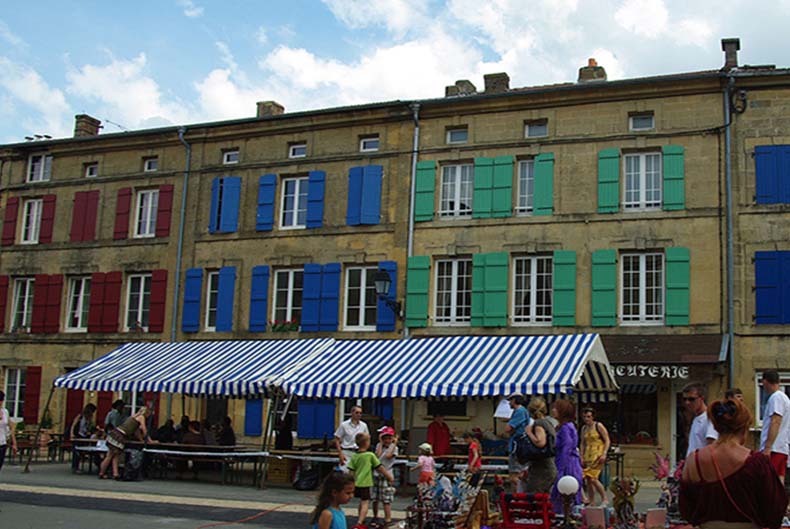The small but delightful town of Marville.
Marville experienced a period of great prosperity in the 16th century. That era is called "the Spanish-Lorraine era." Because when the Netherlands lived under Spanish rule, a Spanish garrison resided in Marville. The Spanish army introduced a Mediterranean way of life and architecture. Some settled there for good when the regiment left.
Thanks to this era, Marville was thriving and wealthy. During this time, rich and beautiful houses were built by noble lords, citizens and merchants. At that time, 3,000 residents lived in Marville.
The village is surrounded by fortification walls and rises above the landscape. Some special buildings and streets:
- The Place Saint-Benoit (Renaissance) .
- The Grand Place with some admirable facades. Especially: the Liesenfeld house and the former Hotel of Egremont (17th century).
- The rue du Basles with the Guillaume house (alias de Ridder Michiels) with images of the 4 heemschildren, Thisbé and a picture of David and Goliath on the balcony railing.
- At the bottom of this street is the house where Emperor Wilhem II lived (1914). From here you have a beautiful view of the surrounding landscape.
- The rue du Tripot (Kroegstraat): a street where there were probably many inns with the house of the cloth weavers (beautiful facade). A monastery that was partly destroyed during the war.
- The rue du Prêtres (street of the priests) with exceptional facades.
- The St. Nicholas Church
And if you are in Marville, visit
- hilaire cemetry, a special church and cemetery.
- the Baurette wash-house, with 8 basins.

